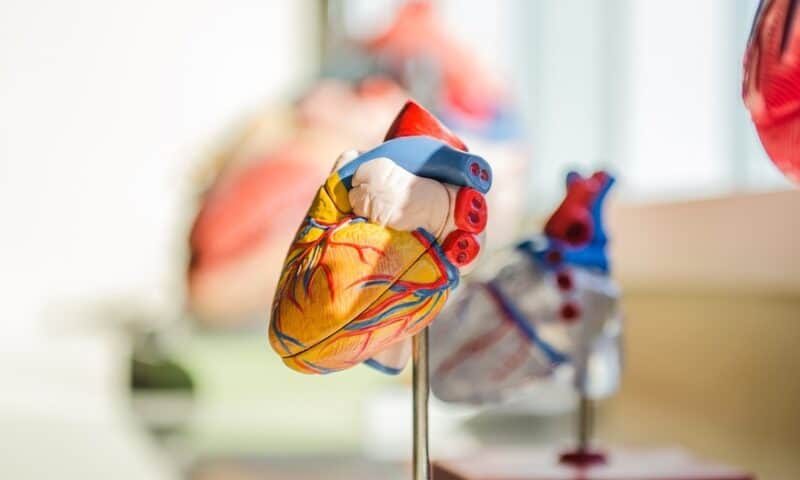People with coronary artery disease often take multiple medicines to stave off heart attacks, including blood thinners, cholesterol-busting statins and drugs that keep blood pressure in check. But what if this arsenal of drugs could be replaced by a single injection? Verve Therapeutics believes it has the key: base editing.
Unlike the CRISPR gene editing system, which is often referred to as “molecular scissors,” base editing does not cut DNA, making what’s called a double-stranded break. Instead, a base-editing treatment homes in on one base, or letter, in the genome and then changes that letter to a different one without affecting the letters around it.
In two studies presented Saturday at a virtual meeting of the International Society for Stem Cell Research, Verve Therapeutics showed that the approach could switch off either the PCSK9 or ANGPTL3 gene—both of which play a role in heart disease—in monkeys.
Two weeks after treating the animals, the researchers found that the PCSK9-targeting treatment turned off the gene in an average of 67% of liver cells, causing an 89% drop in PCSK9 protein in the monkeys’ blood and a 59% dip in LDL, or “bad,” cholesterol in their blood.
It saw similar results with its ANGPTL3 treatment, which switched off the gene in an average of 60% of liver cells. That caused a roughly 64% decrease in the monkeys’ blood triglyceride levels and a 19% drop in their LDL cholesterol levels.
“The punchline here is we now provide proof of concept for an entirely new way to treat heart attack: a gene-editing medicine that is administered once in life and thereby permanently lowers cholesterol and triglycerides,” Verve Therapeutics CEO Sekar Kathiresan, M.D., told Fierce Biotech.
One weakness of the study is that the data cover just two weeks of follow-up. The investigators plan to keep following the monkeys to see whether the gene editing and its results are long-lasting. Other researchers have shown CRISPR gene editing effects last as long as two years, Kathiresan said, so Verve expects its treatments to be durable, too.
Traditional CRISPR treatments comprise a DNA-cutting enzyme and a guide RNA, often packaged into a virus. Verve’s treatment, which is based on adenine base-editing technology from Beam Therapeutics, includes a guide RNA and a long piece of mRNA that acts as a base editor enveloped in a lipid nanoparticle.
“What you get at the end are little spheres, with the mRNA and guide RNA in the center and the lipids around it,” Kathiresan said.
Those spheres are injected into the bloodstream, where they make their way to the liver. Once the liver cells take them up, the mRNA and guide RNA are released into the cells, which translate the mRNA into the base-editing protein. The guide RNA then binds to the base editor and the complex travels to the nucleus where it changes one letter in the PCSK9 gene or the ANGPTL3 gene.
“The guide RNA overall is 100 letters, but of that 100, 23 are what targets the editing system to the gene of interest. It’s like matching puzzle pieces,” Kathiresan said.
What happens if the base editor happens upon pieces of the genome that match 21 or 22 of the 23 letters in the guide RNA? It could potentially bind to those parts of the genome and edit the wrong bases. Verve has identified 108 possible spots on the genome where unintended editing might happen, and it aims to prevent these off-target effects by choosing the guide RNAs that provide “exquisite specificity.” When Verve’s researchers tested the treatments on human liver cells, they found no evidence of off-target editing.
Next up, Verve will pick a lead candidate to bring into IND-enabling studies with an eye on starting a human trial in 2022 or 2023, Kathiresan said. It will keep plugging away at its programs using CRISPR Cas9 and Cas 12 to turn off cholesterol-raising genes.

